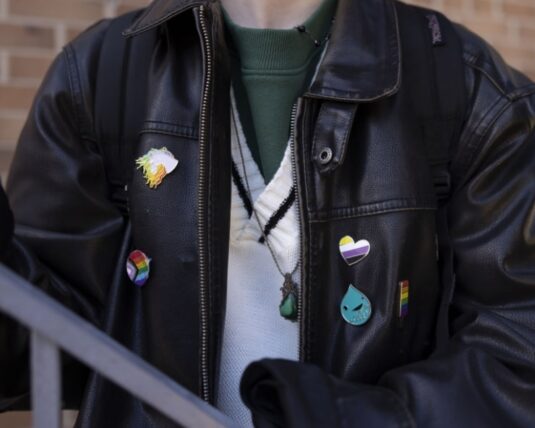Personal pronouns are words that replace people’s names. Each person may like to be addressed with pronouns (e.g. “they”, “he”, “she”, etc.) that reflect their gender identity. If you have questions about pronouns, it’s OK if you’re not sure where to start.
We asked our community of crisis responders what questions they get asked most about personal pronouns and what information they felt might be helpful for young people to know.
Here, Kids Help Phone interviews the Canadian Centre for Gender and Sexual Diversity (CCGSD) to share information about what pronouns are, how you can use them respectfully and how to advocate for yourself and others.
Personal pronouns are a way of addressing someone aside from using their name. The easiest way to present pronouns is by stating one’s subject and object gender pronouns. For example, someone named Xena might list their subject/object pronouns as “Xena (she/her).” Some commonly used pronouns are she/her, he/him, they/them, among others. You can’t make assumptions about anyone’s pronouns based on the way they express or present themselves. Regardless of gender expression, you may use gender neutral pronouns (they/them) for a person whose pronouns you don’t know.
For a lot of folks, pronouns are a way to affirm their gender identity in daily life, in the same way they use a name. Using someone’s pronouns is the easiest way to support them and validate their gender identity. Acknowledging and using someone’s pronouns is a sign of respect.
For gender non-conforming / transgender (trans) / non-binary folks in particular, pronoun usage is integral to feeling welcome and affirmed. Not using someone’s proper pronouns is known as misgendering* and can contribute to or trigger gender dysphoria for some.
*Misgendering means using a word, pronoun or form of address that doesn’t reflect someone’s gender identity
It’s important to never assume people’s pronouns. If you’re unsure of a person’s pronouns in a conversation, you can offer yours as a soft ask* — stating one’s own pronouns in hopes that they will respond with theirs — and they might tell you theirs as an exchange.
If you feel comfortable asking, phrase it as, “What are your pronouns?” as opposed to, “Are your pronouns _____ [or] _____?” as to not make assumptions. Keep in mind that pronouns are also contextual: it may not always be safe to use someone’s true pronouns in front of certain people, especially those who may have power over them. It’s important to take the time to find out when and where it is safe to use someone’s true pronouns in front of others.
*An example of a soft ask is, “Hello my name is Ann. My pronouns are she/her.” “Nice to meet you Ann. My name is Ezra, and my pronouns are they/them.”
Accidents happen; if you mess up someone’s pronouns, simply apologize and correct yourself! Don’t make a big deal out of it and avoid making an excuse for why you made that mistake (for example, “I’m tired” or “it’s just really hard sometimes” or “I’m not used to using those pronouns”). Phrases such as these can often be hurtful to someone who is trying to assert new pronouns, or ones that differ from those assigned at birth.
Everywhere! Social media profiles, dating profiles, formal and informal introductions, display names on video platforms, name tags (for example, “Hello my Name is X and my pronouns are Y/Z”). When you introduce yourself to new people, make it a habit of saying your pronouns after your name! Include your pronouns after your name in your email signature. Your pronouns belong anywhere your name is being introduced!
Where can I learn more?
You can find Kids Help Phone’s trustworthy info, first-hand experiences and more related to gender identity, gender expression, first-hand experiences about identity and the impacts of discrimination below.




















